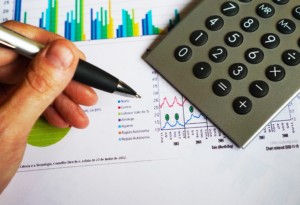How to Balance the Cost of Maintenance
 There is not a single maintenance department that I am aware of that has an unlimited budget. If you are aware of one, please let me know as I would love to see if it is successful or not.
There is not a single maintenance department that I am aware of that has an unlimited budget. If you are aware of one, please let me know as I would love to see if it is successful or not.
Since most of us do not have an unlimited maintenance budget, we need to be smart about how we spend our maintenance money. Therefore there needs to be a balance and well thought out approach to the spend. We all know that proactive maintenance is cheaper than breakdown maintenance. But how do we balance the cost of maintenance with risk, to ensure that operations get the most out the equipment?
Cost to Maintain Vs. Cost of Repair
There is a balance that must be struck between the cost to maintain (and be proactive) versus the cost to repair equipment once it begins to fail. There are two main areas where is this out of balance.
One of the things I see in many PM programs is the attempt to maintain out all failures. If a completely random failure occurred, often the maintenance department will be ordered to “put in a PM for that.” With the failure being random, the PM is not effective and costly. This leads to inflated PM programs, and the department is forced to pick which PMs will be done, further causing equipment reliability issues.
The other thing I see is that there are extensive PM programs in place for assets or equipment, where there is no consequences or very minimal consequences in place. For example, how many have PMs in place to check to the condition of ceiling fans, lights, etc. Expect for emergency lighting or fans that control hazards in the environment wouldn’t it make sense just to fix the issue when it occurs? Or what about a backup sump pump?
Consider a sump pump that costs $200, and it has a backup. On average they last around three years in that specific operating environment. Would it make sense to have a maintenance technician at $40/hr check the pump monthly which takes 30 minutes? The cost to perform the maintenance is $20 per month or $240 per year. Considering that a sump pump for that price is a throwaway item, wouldn’t it make sense to check it once or twice a year instead? Probably not.
Cost to Maintain Vs. Cost to Design Out
Another area where the cost to maintain could be reduced through a redesign. Redesign enables the maintenance activity to be eliminated, or reduced (either the time or impact on the impact).
I had the experience of working in a facility that had a very extensive lubrication program. The problem was that there were many lubrication points and all required the equipment to be down. The lube route took approximately 8 hours each week, all while requiring the equipment to be down.
After a review, we concluded that we could reduce the total downtime to 1 hour if we installed remote lube lines and a few remote lubricators. However, this had a cost of around $9000, so we had to demonstrate how it would save the maintenance department money.
At $40/hr for the technician, it cost us $320 per week to do the lubrication. Since the plant ran 50 weeks per year, that worked out to $16,000 per year. While we weren’t able to eliminate all labor, we able to get it down to 1 hour, so $2000 per year. That is a saving of $14,000 per year in labor and doesn’t even include the cost of downtime (estimated to be around $1100) per hour.
So within the first year, we were about to generate a savings of $5000 ($16,000-$2000 labor – $9000 project costs) and $14,000 in years two and beyond.
So consider where your maintenance staff is spending their time and look for ways to reduce or eliminate the need for maintenance. Often, the maintenance labor savings alone may not be enough, so be sure to consider the cost of downtime to the organization as well.
Repair Vs. Replace Decisions
Lastly, one of other ways that maintenance is not balanced is the constant need for extensive repairs or overhauls on select pieces of equipment. Most equipment should be maintained at less than 5% (benchmark is 3%) of the Replacement Asset Value. There will be exceptions to this in heavy industries and equipment such as mining and rock crushers, etc.
To calculate the percentage of Replacement Asset Value us the formula Total Maintenance Cost per RAV (%) = If your percentage of replacement asset value is above 10%, there should be an extensive review of the maintenance program, asset, etc. to identify the root cause of the excessive costs and corrective actions put into place. If you have trouble meeting your maintenance budget, I would suggest starting to look at these three areas to see if your program is out of balance. What have you found to be effective in reducing your maintenance costs? If you need help in preparing or reviewing a maintenance budget for your maintenance & reliability program, please contact [email protected] for assistance. Remember, to find success; you must first solve the problem, then achieve the implementation of the solution, and finally sustain winning results. I’m James Kovacevic Eruditio, LLC References

